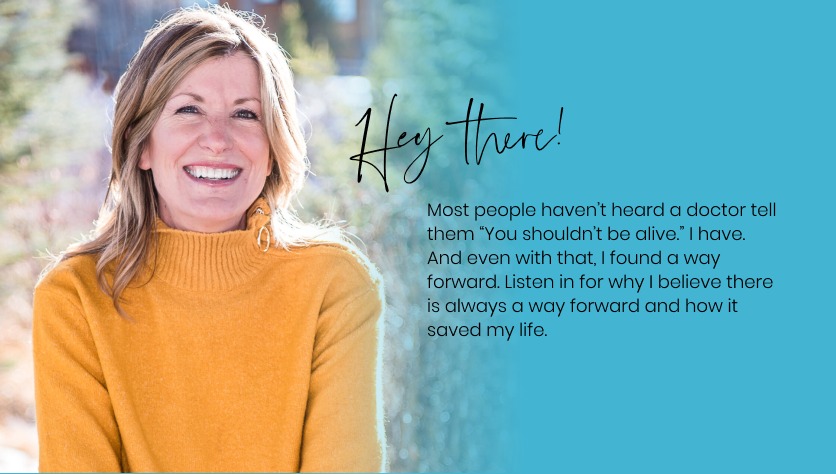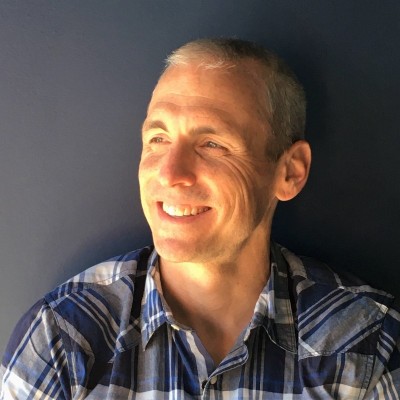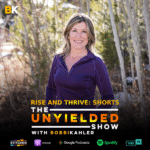[00:02] Bobbi: Welcome to UnYielded: Thriving No Matter What, where we talk about how to make your next chapter in life your best chapter. I’m your host, Bobbi Kahler, and I believe that the best is yet to come.
Welcome back, everyone. I am so glad that you are here. In the past, I’ve talked about my three fundamental truths, and in case you’ve missed, that, they are number one, the future can be changed. It is not set in stone. Number two is that you can change your future. One of the most important moments of my life was when I realized that no one was coming to rescue me. And that’s okay. We can be our own hero. And finally, number three, you don’t have to wait. You can learn what you need to learn along the way. Today is one of those skill sets that helps us to intentionally compose our desired future. And I’ve always thought that I’m either composing my future or I’m leaving it to chance. To help us with this, today I’m bringing in a new guest expert, Andy Williams, whose superpower is intentional decision making. In this short episode, he’s going to cover, one, how to make important decisions quicker and better and have more confidence in those decisions. Two, the three big mistakes of decision making. And finally, number three, one of the best strategies for intentionally composing your future that I’ve ever heard. And that’s saying a lot, because this is something I’ve studied and I’ve heard a lot of them, and I absolutely love what Andy shares. It’s very powerful. So, a little bit about Andy. He was one of my very first guests on the podcast, so I’m super excited to have him back. And Andy is on a mission to make high quality decisions a reality for teams and individuals by providing consulting, training, and coaching that enables and empowers better and faster strategic decision making. Andy believes that making better, faster decisions is a superpower we can all learn. He believes it is time to get off of autopilot, and it’s time to empower your team and yourself to decide your vision into reality. Here’s Andy.
[02:30] Andy : It’s estimated that the average adult makes about 35,000 decisions each day, and research suggests that only about 30 of those decisions get intentional thought. Let’s face it, we’re on autopilot for most of the day, but our decisions literally shape our lives. Yet most of us put little or no thought into how we do it, how to do it better, or how to avoid the regrets of bad decisions. I’m no different. Or at least I was no different. As a second year graduate student, I was faced with making a difficult next step career decision. I can remember sitting at my desk in my studio apartment, reviewing all my analyses. I could remember all the papers scattered across my desk. I had my three options to consider. I had a procon list. I had spreadsheets with financial analysis. I had a personalized drinks report help me consider job fit. That’s far more information than most people have when they try to make a decision. Yet I was frozen, literally sick to my stomach that I might make the wrong decision. I had three good options, but I couldn’t make a decision. In fact, I didn’t make a decision. I really left it all to chance. And why? I didn’t have a way to make important decisions quickly and effectively, and I didn’t have a way to make intentional decisions that were actually aligned to a vision of the future or my goals. What’s even more disconcerting was that I was studying decision sciences. I had learned the best, the gold standard ways to make decisions. I had learned the discipline of approaching big decisions in a methodical stepwise fashion. But it was too slow and too impractical for regular humans like me to use. Once I left school, I began to see this everywhere. I saw all the mistakes I had been taught to avoid, yet we just couldn’t seem to avoid them. Not in our personal lives and definitely not at work. The big three mistakes that I was trained to avoid that I see everywhere one, over focus on decision outcomes with no attention to the broader long term impact. Two, over focus on a single attribute, such as money while ignoring others. And three, inability to incorporate either future or outside perspectives. I want to put an end to all of this. I want to put an end to the paralysis by analysis. I want to put an end to the status quo lock in. And I definitely want to put an end to the endless meetings that not only waste time, they actually lead to worse outcomes. Better, faster decisions are possible. It’s just no one’s taught us how to do it. Better decisions start not with goals, but with a clear vision for the future. Why a vision and not goals? When you speak to wise older people that you know, do they list out for you all the goals they accomplished? No. Now they tell a story. And that story is marked with scenes you want to be better at life. Plan in advance which scenes you want to live, then make decisions that make those scenes a reality. That’s the most straightforward and accessible way I know to have vision and live it out. How do you do that? How do I do that? Paint a picture of a scene far off in the future. I started with just one if I get to live that moment, I’ve lived a good life kind of scene. Just bear in mind that for most of us, regardless of what you may think right now, you’re most likely to value relationships and significance far more than the achievements or experiences you’re likely to be chasing now. So here’s my scene. I’m 70 years old, and I’m hiking with my wife and my two adult kids. The kids are chatting away behind us while my wife and I are just enjoying the quiet piece of hiking together. My older son taps me on the shoulder and asks if he can run something by me. We fork off onto a steeper section of trail away from the others, and he asks my advice on some decision he has in front of him. My wife smiles and nods knowingly as we head off. So now I have a scene. You may choose to have more than one, but I’ll start here with that scene. I can now ask myself what has to be true to get to live out that scene. And I can just start listing everything that needs to be true, start listing and keep peeling back the onion, listing out all the things that might have to be true for me. I’ve got everything from still be married, to have a great relationship with my son, to be in good enough shape to hike at 70. Once I have a nice long list, I can take that list of what has to be true and I can start to organize it. I want to organize it into themes health, relationships, time available. These themes are not goals in the traditional sense. They’re measures. They’re how you will measure your life. In decision sciences, we call those your decision attributes. And these attributes are directional, meaning the kind of thing where more is better versus yes, no, I’ve achieved this thing. And since they’re directional, it makes more sense to think of them as a path and not a goal or finish line. You want to go further down that path and that’s what gives you a direction, what I call a trajectory. And why do I think of this as a trajectory? Well, because all you need to do is stay on course and adjust speed as necessary. So how do you know whether to adjust speed? How do you know if you’re on course? Since life is uncertain, we need to think in terms of more and likely, how much more of a certain attribute do I need to make me confident that my scene is likely to happen? While there are highly sophisticated analytical techniques for answering these kind of questions, here is how regular humans like us can put it to use practically. First, when I’m doing my quarterly goal setting, I can ask myself, do I need to change anything now to improve the likelihood that the scene or scenes that make up my vision will be realized? If I want to avoid that single attribute trap of focusing on career and saving everything else for later in life, I want to make sure that my short term goals are always in the service of my vision and those scenes. Second, when I have a difficult, long term impacting decision, I can test it against the scene or scenes. I can test it against the attributes that make up those scenes. How will it impact the health attribute? How will it impact the time attribute? Ultimately, what we’re doing is we’re asking ourselves, which option feels most consistent with a future where I get to live that scene? Look, we’ve all likely made a career decision that looked really good on one attribute, but in hindsight, we put too much of the other attributes at risk. And finally, if you ever feel that you’re not even on the right path, not on the right trajectory, you can go searching out new decisions to make that, while they won’t necessarily get you to a goal, will at least have you feeling like you’re on the right trajectory to achieve it, to live out that vision, that’s it. One simple tool, but powerful tool for improving your long term decisions. While there are a lot of tools for improving decision making, this one is a great place to start because it addresses the start of the decision making process, which is your vision of a preferred future and the attributes that you’ll value it by. Once you have those established, you can work your way into the other steps of the decision making process to work on decision clarity, decision quality, and decision velocity. I know that better, faster decisions are possible. I’ve proven it. I went from someone who was paralyzed by every difficult decision to someone trusted as an advisor because, to quote a former colleague, intentionality is my superpower. But like any skill, it requires a little retraining and a lot of practice. This is your life. It is so worth it. Don’t leave it to chance. Don’t assume you can catch up later. Future you is counting on you. Those scenes you envision are possible, and it all starts with better decisions.








